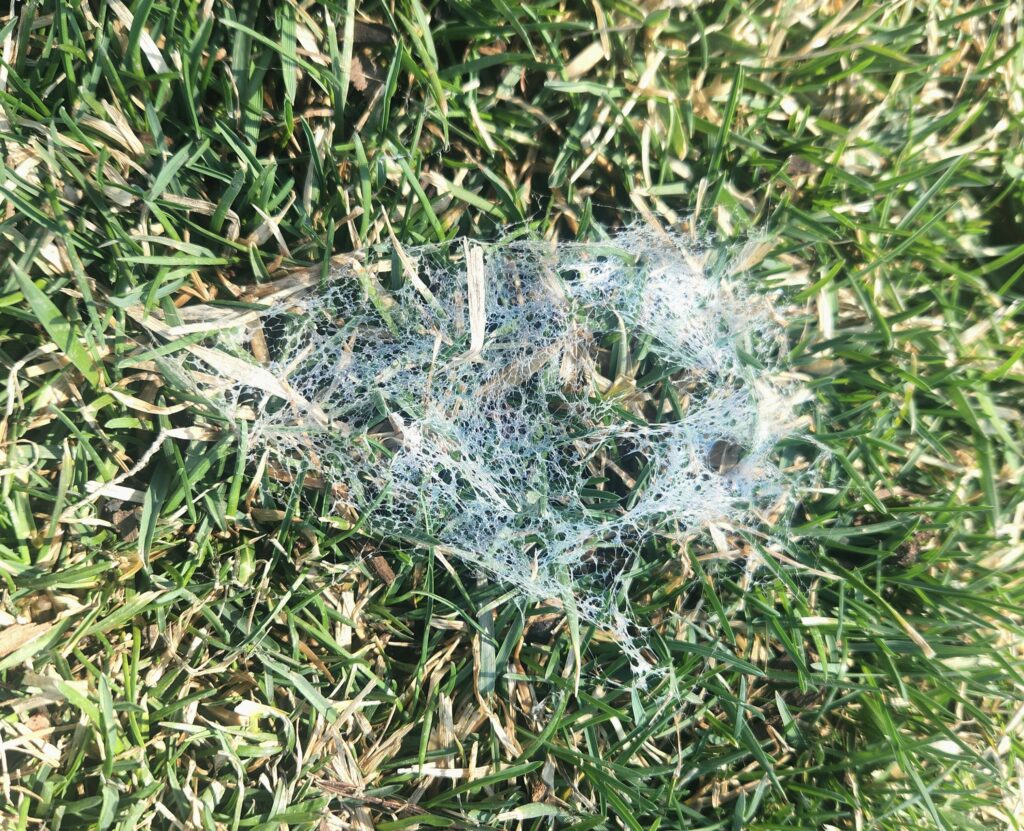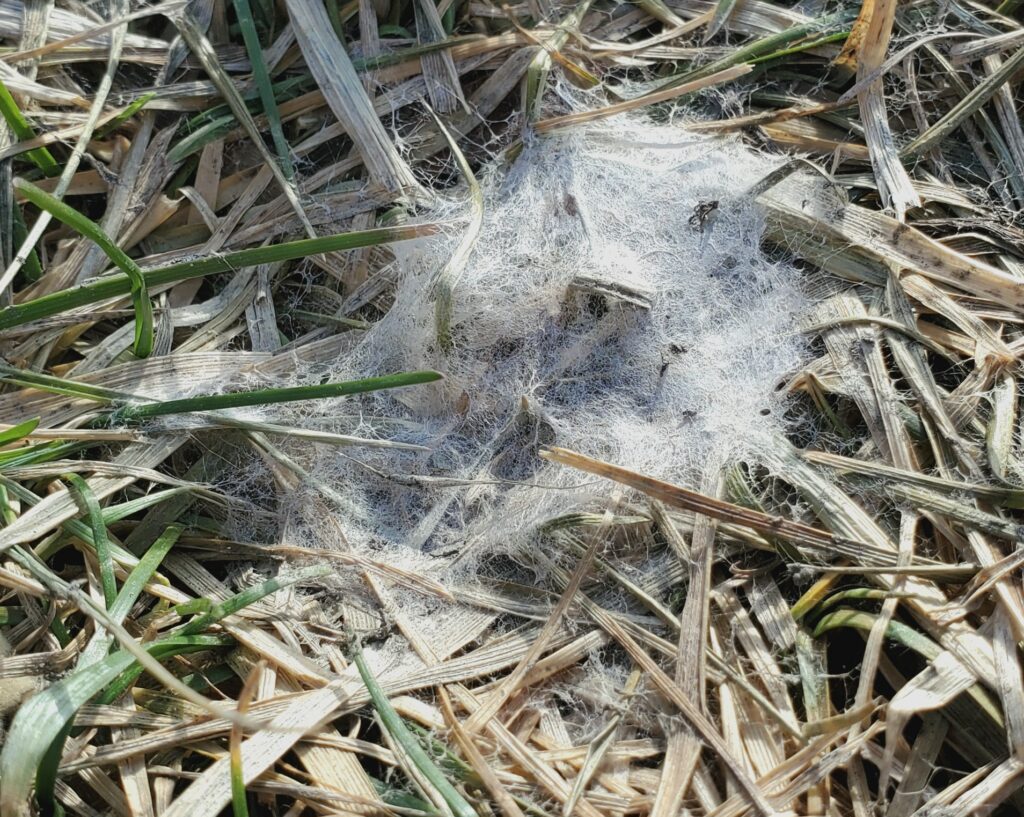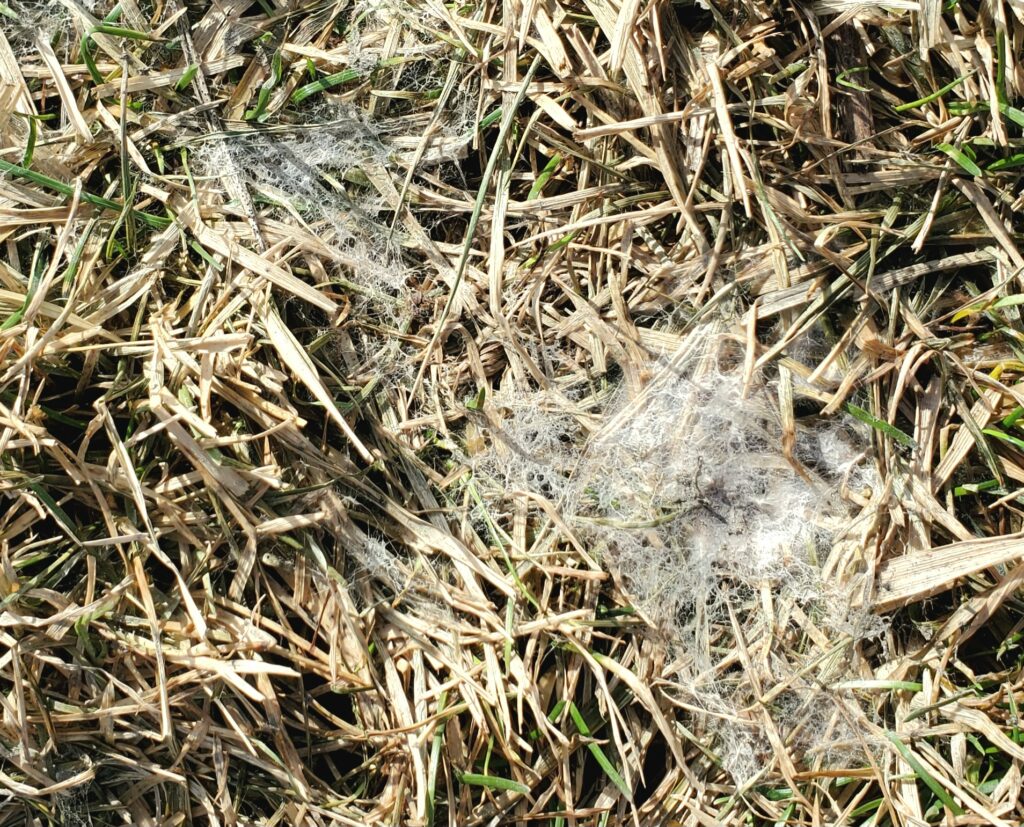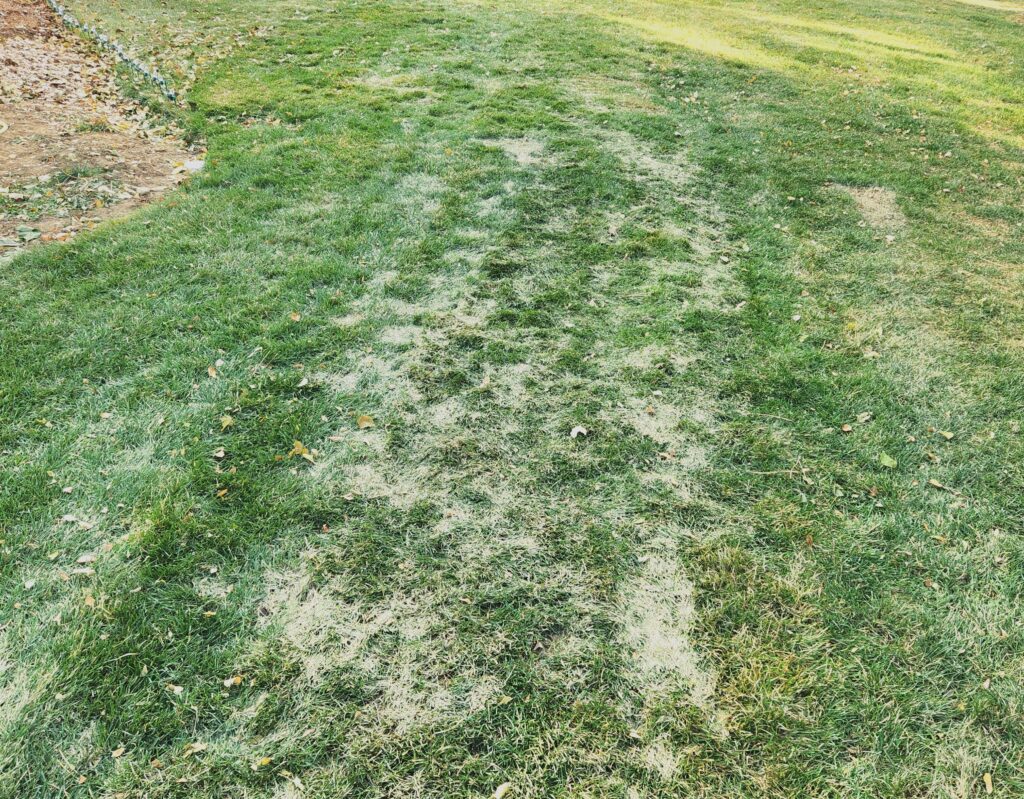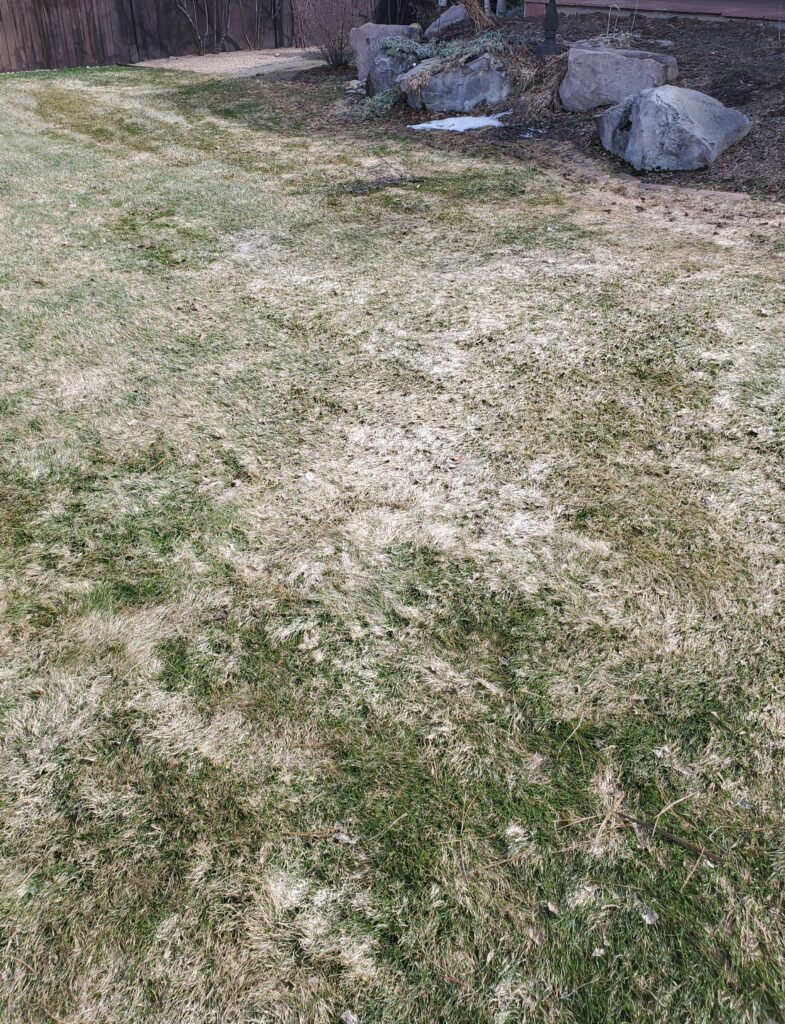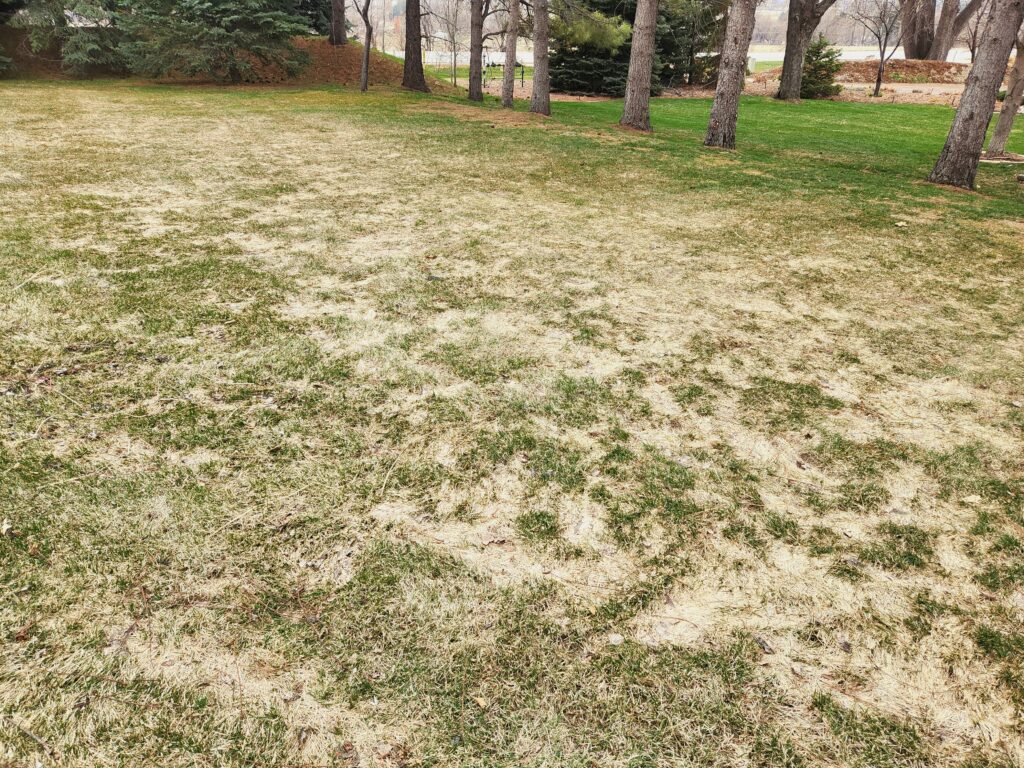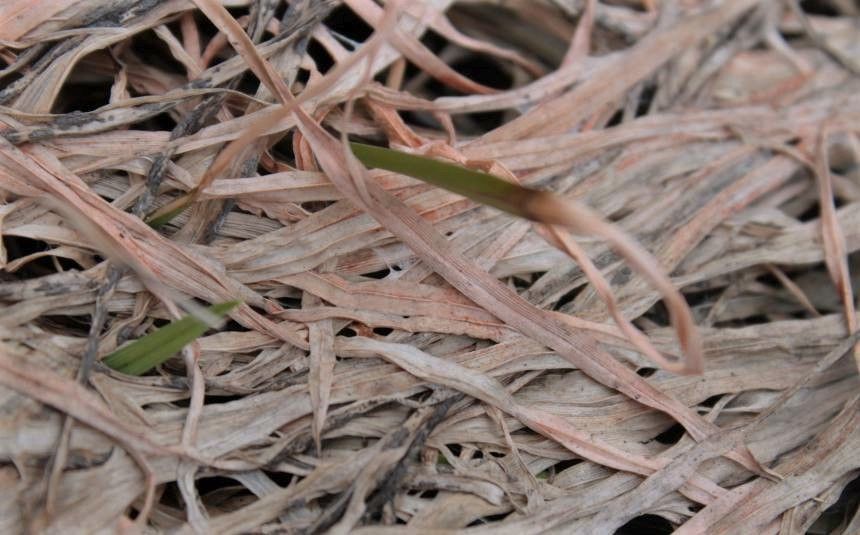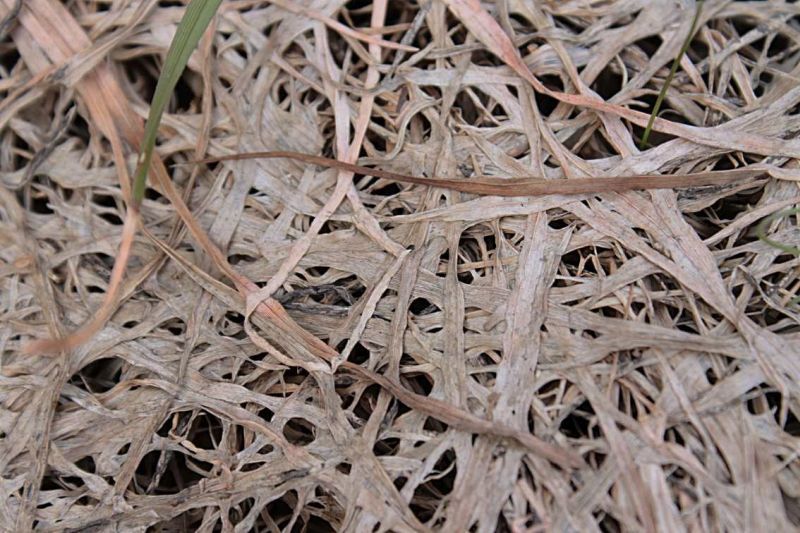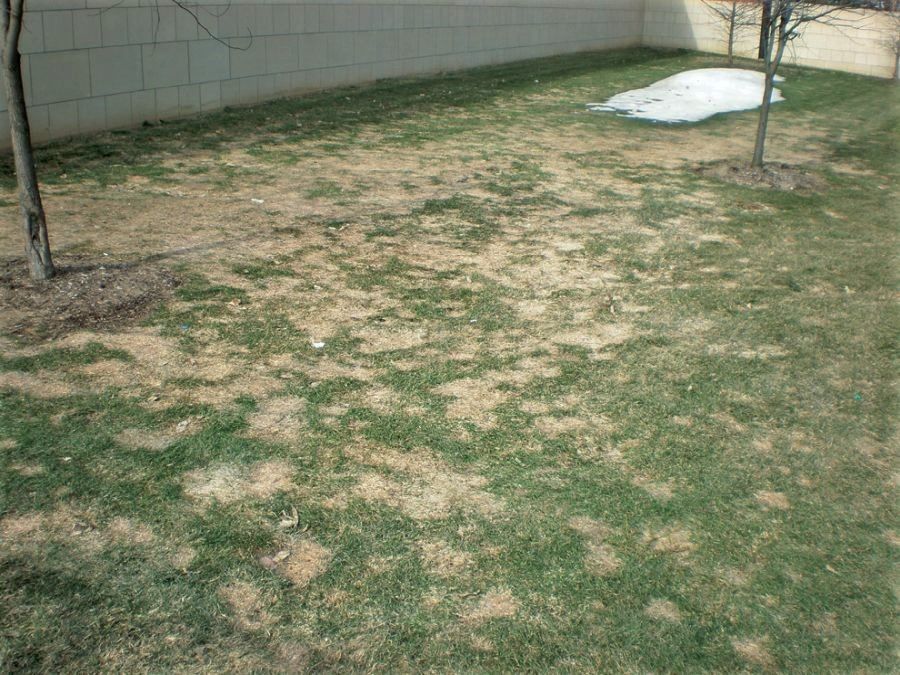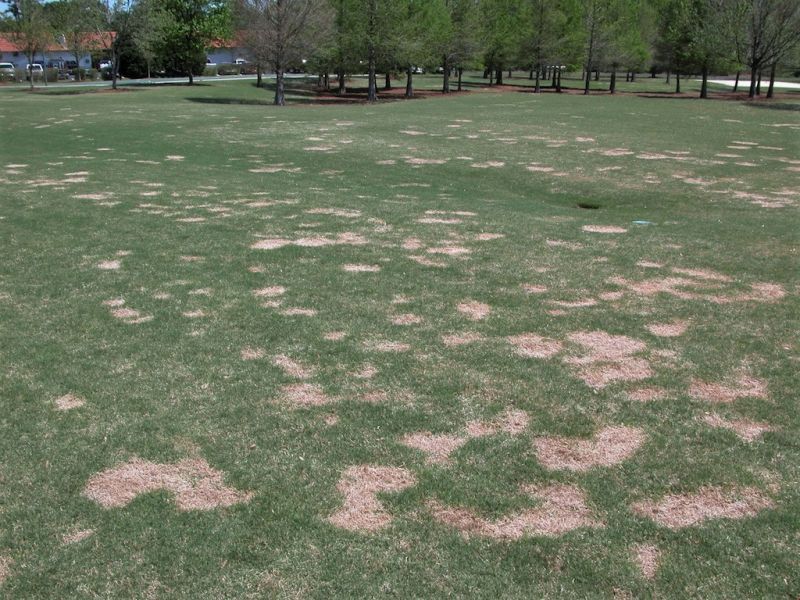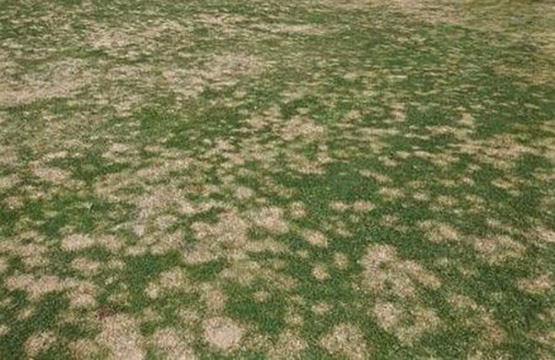Snow Mold Treatment and Prevention
How To Treat Snow Mold in a Lawn
What is Snow Mold?
After the Snow Melts
Once the snow finally melts, you may notice patchy or blotchy areas covered with a cottony webbing on top of the grass. This is snow mold, which will die quickly when exposed to warmer temperatures and sunlight. While snow mold does not damage the lawn itself, if it is left on the grass, it can block sunlight from reaching the grass blades, inhibiting the production of chlorophyll. Unfortunately, any resulting damage to the lawn may not become apparent until a few months later, when certain areas fail to green up properly. The good news is that snow mold treatment is easy and chemical free.
Pink and Gray Snow Mold
There are two types of snow mold that can cause damage to lawns: Gray snow mold and Pink snow mold. Both types become active during extended periods of snow cover, developing on top of the lawn between the grass and the snow. Snow mold typically occurs after a winter with prolonged snow cover where the snow does not fully melt for several weeks.
Gray Snow Mold
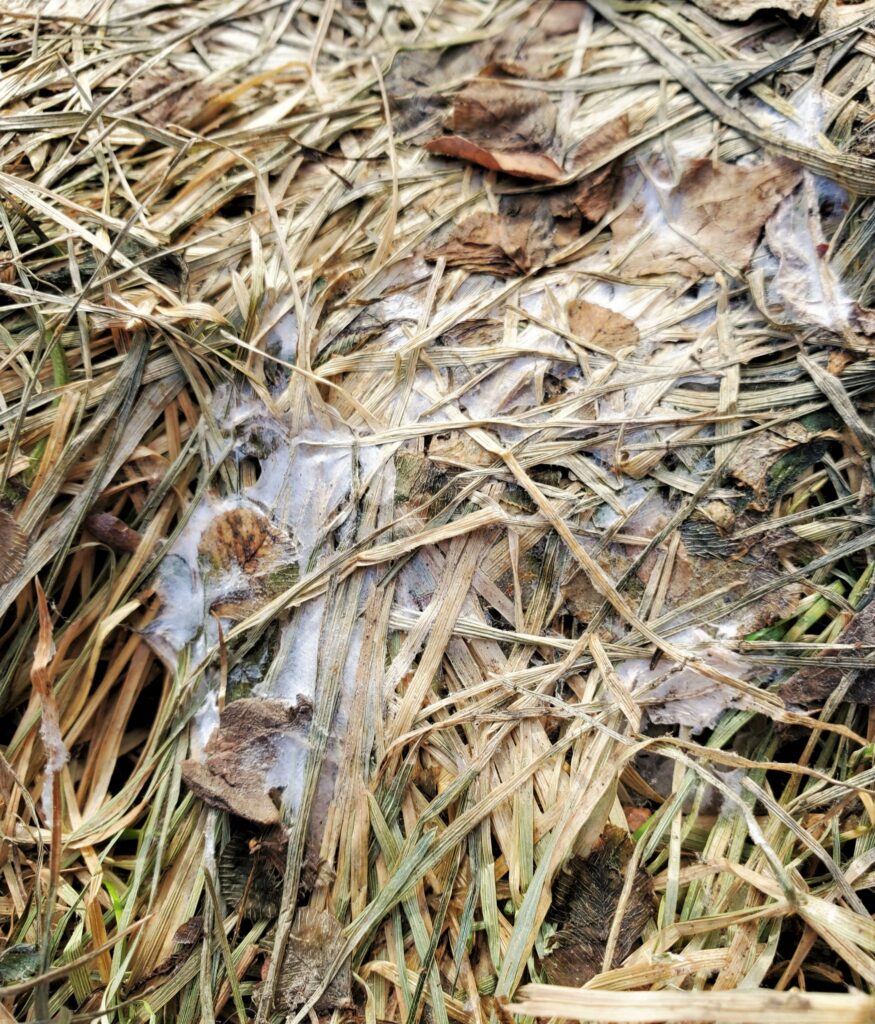
Snow Mold is a Very Common Colorado Lawn Problem
Gray snow mold, also known as Typhula blight, is active in lawns at temperatures just above freezing. It appears as circular patches (6 to 12 inches in diameter) with a moldy appearance when the fungus is actively growing, which can be seen immediately after the snow melts. Under severe conditions, these smaller patches may merge to form larger, matted areas that appear dead. As the lawn begins to dry out, the fungal growth slows, and the patches can take on a light tan appearance, eventually fading to light gray or white.
Does Fall Fertilization Make Snow Mold Worse?
Contrary to popular belief, late-season fertilization (often referred to as “fall” or “winterizer” fertilization) neither encourages snow mold nor increases its severity. In fact, applying fall fertilization can promote more rapid healing and recovery in lawns affected by snow mold damage.
Fall Lawn Fertilization
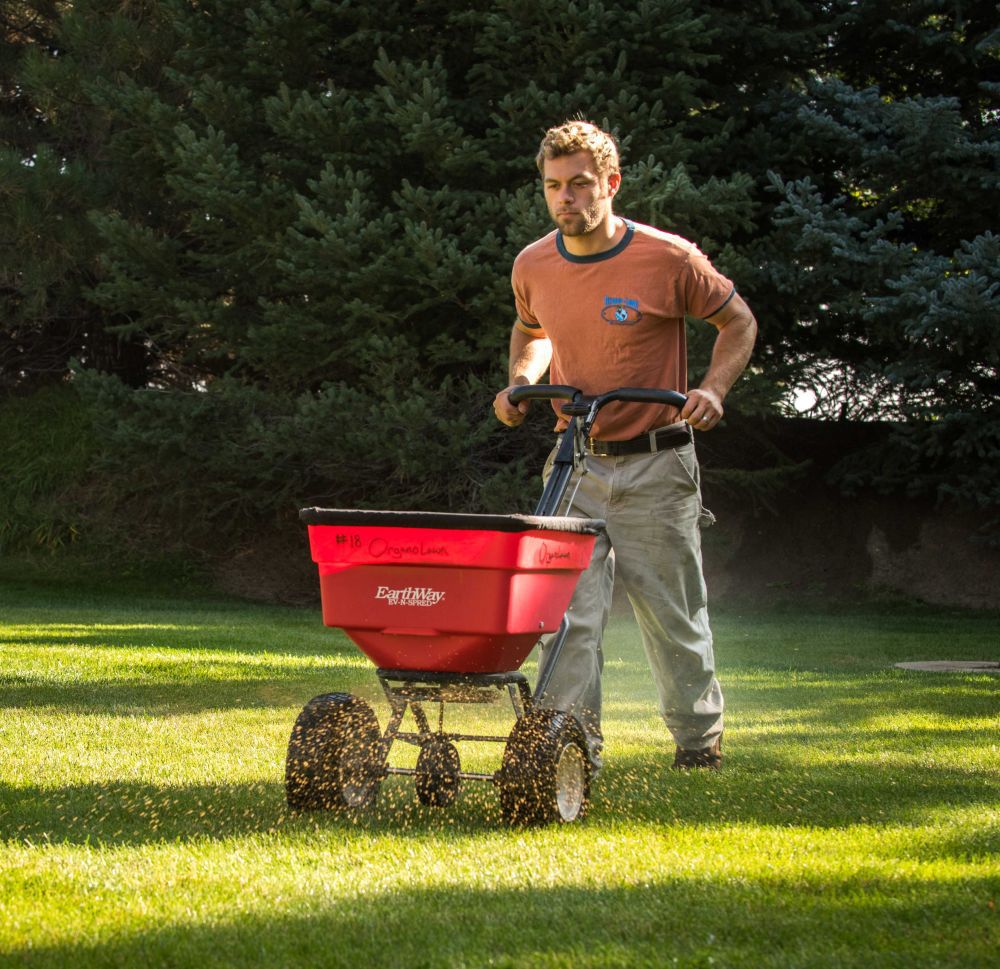
Why Do Most People Only Notice Snow Mold Damage When it is too Late?
Gray Snow Mold vs Pink Snow Mold?
Snow mold quickly dies when exposed to sunlight or when the area dries out. The activity of gray snow mold ceases when the surface dries or the temperature rises above 45°F. In contrast, pink snow mold can remain active during wet weather in the fall and spring, as long as temperatures are between 32°F and 60°F. While gray snow mold is common in Colorado, pink snow mold is rarely found in lawns across the state.
Damaged Noticed Too Late
Symptoms of snow mold damage may appear in the lawn long after the mold is no longer active. Homeowners typically notice snow mold damage as circular, straw-colored patches surrounded by green grass. The affected areas often have a matted appearance and exhibit discoloration.
Minor Snow Mold
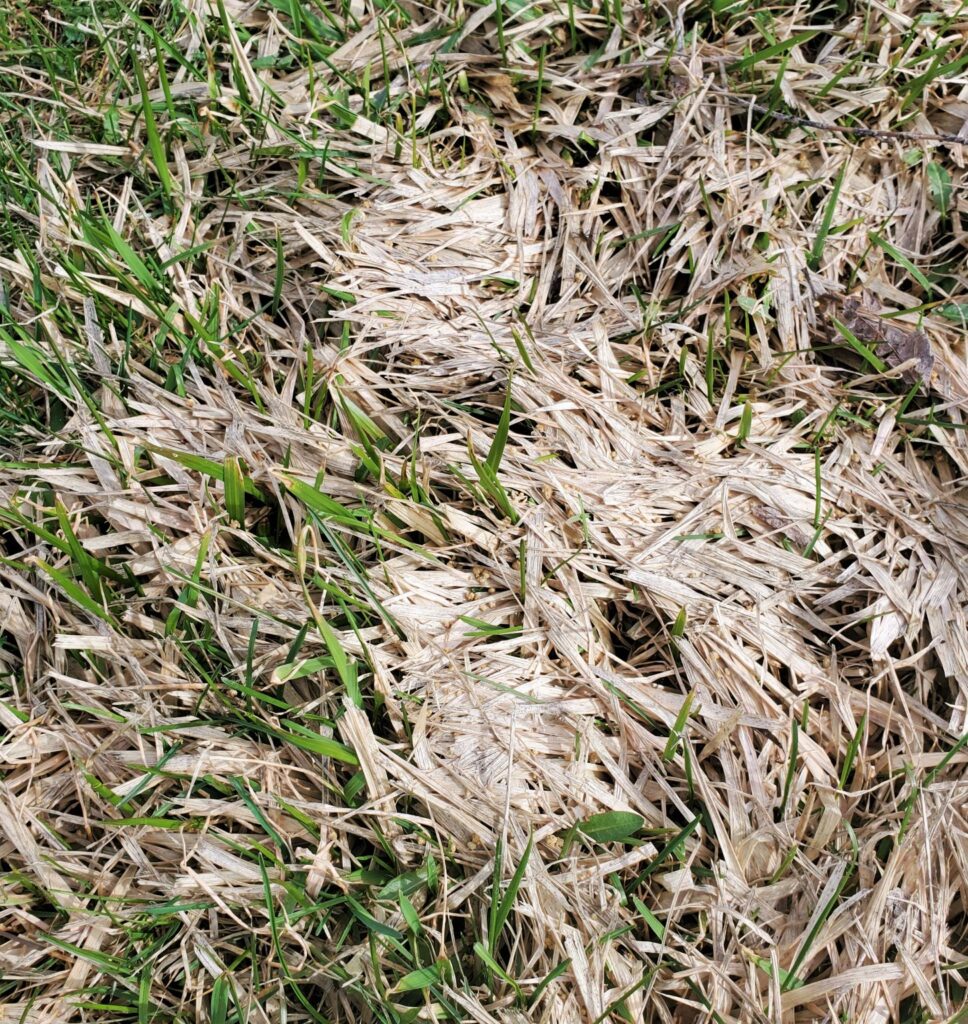
How to Prevent Snow Mold from Causing Damage to a Lawn?
Will the Lawn Recover?
The damage caused by snow mold is usually not severe. If the snow mold is minor, the affected areas will take longer to green up compared to the rest of the lawn. When the snow melts and the snow mold dies, it sits on top of the grass, blocking sunlight from reaching the turf, which prevents it from producing chlorophyll.
Leaf Rake
To treat and prevent snow mold damage, homeowners should gently rake the affected areas with a leaf rake. This raking breaks up the snow mold, allowing sunlight to reach the grass. The lawn should begin to green up within a few weeks after the snow mold has been disturbed or removed.
Raking Snow Mold
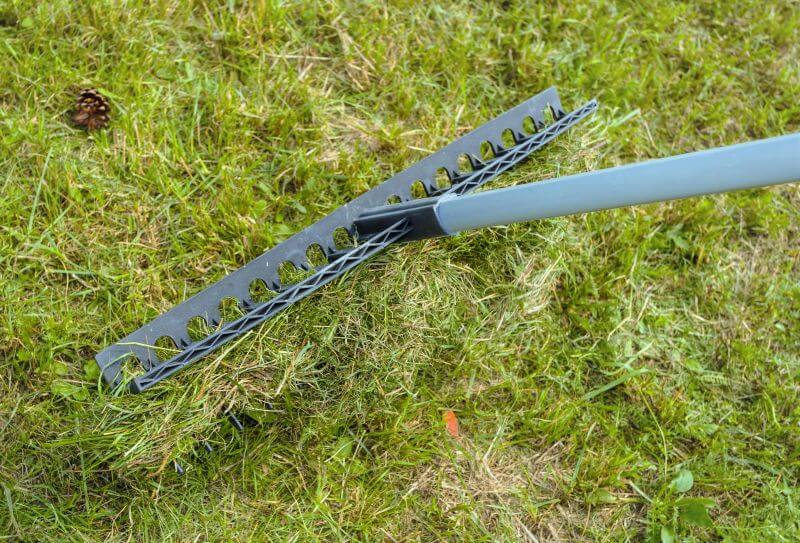
How Much Raking is Necessary to Break Up Snow Mold?
Raking Snow Mold
Time Lapse
Spring cleanup in action! Raking away snow mold damage to help this lawn breathe and bounce back greener than ever!
How Much Raking is Necessary to Break the Up Snow Mold?
Don’t break your back! A light raking is all that is necessary to break up the old snow mold sitting on top of the lawn!
How Bad Can Snow Mold Damage Be?
Severe Damage
In severe cases, snow mold can cause significant damage, but this typically occurs if the mold is not broken up or removed. If left on the lawn for too long, the grass may die. In instances where permanent damage occurs, using a top seeding package may be necessary to repair the lawn. Fungicide applications are generally ineffective, as they do not prevent damage to the grass. Breaking up the snow mold is the only effective snow mold treatment method for preventing harm to the lawn.
North Facing Aspects
Damage from snow mold is most likely to occur on the north side of properties or in areas that do not receive much direct sunlight. While it is possible for snow mold to develop in very snowy and cold winters, south-facing slopes usually do not suffer from this issue.
Severe Snow Mold
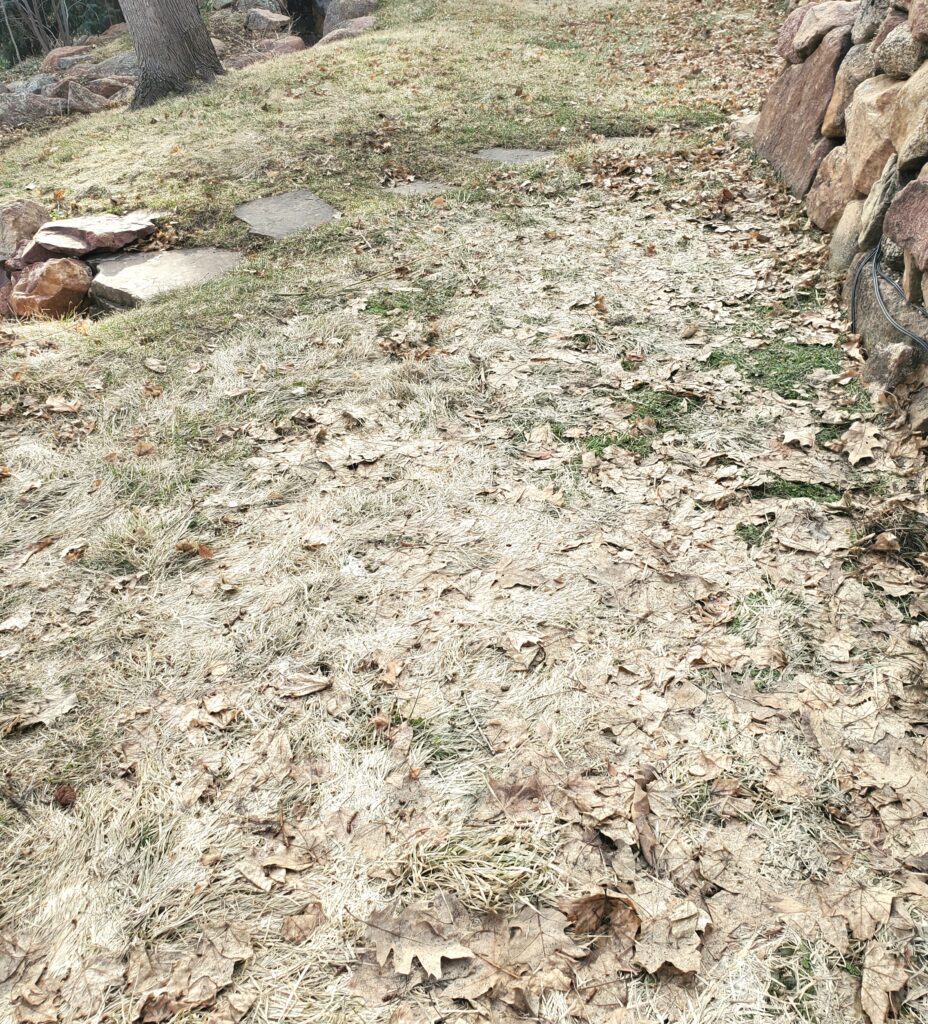
Extreme Snow Mold Damage
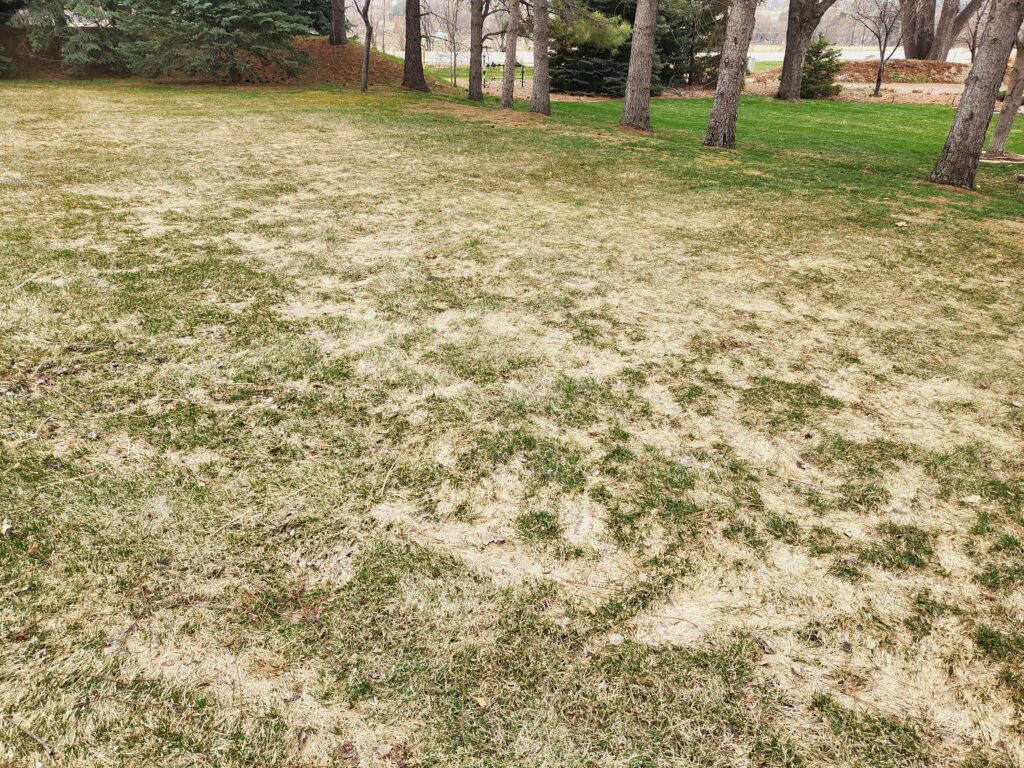
Severe Snow Mold!
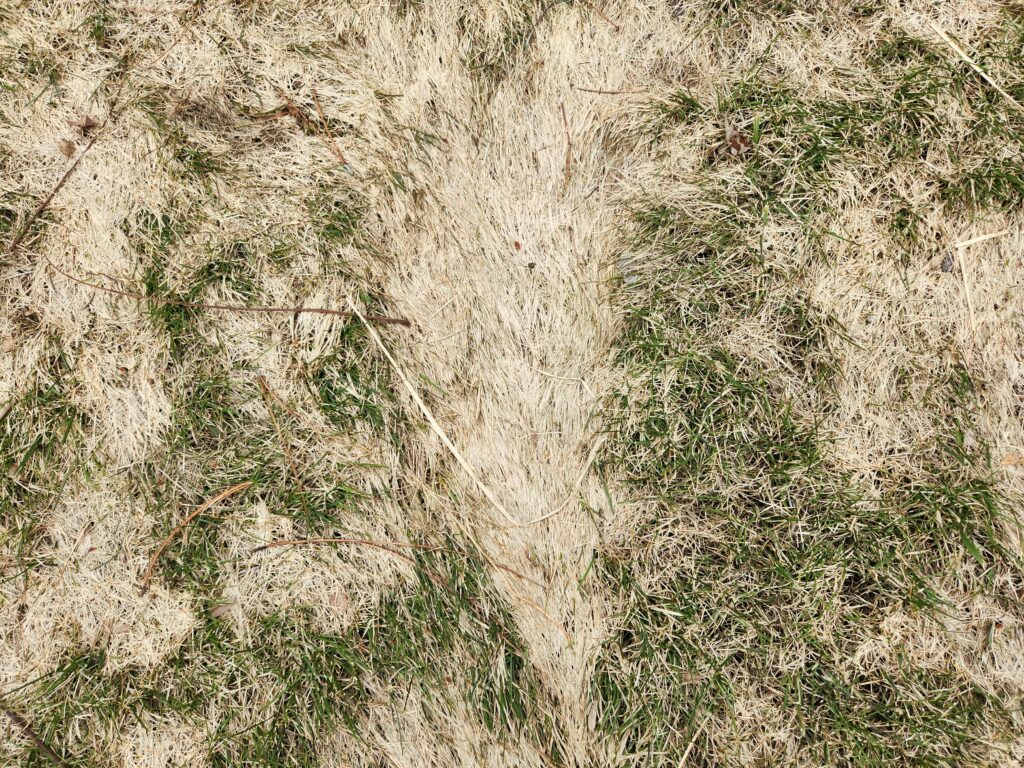
Need Help Fixing a Lawn Damaged by Snow Mold?
Organo-Lawn is Your Local Lawn Care Experts
Contact Organo-Lawn
Boulder (303) 499-2000
Fort Collins (970) 225-9425
A Closer Look At Snow Mold?
Snow Mold Treatment FAQs
What is the Most Effective Snow Mold Treatment for Lawns?
A Leaf Rake is the Easiest Fix
To prevent and treat snow mold damage, homeowners should gently rake the affected areas of the lawn. This helps to break up the snow mold that is sitting on top of the grass, allowing sunlight to reach the turf and promoting healthy growth. The mold itself does not damage the grass directly but can prevent the grass from producing chlorophyll by blocking sunlight.
Allow Sunlight to Hit the Leaf Tissue
Raking with a leaf rake is typically sufficient to break up the mold. This snow mold treatment action encourages the lawn to recover by allowing the grass to receive the necessary sunlight. If snow mold is minor, the affected areas will often green up more slowly than the rest of the lawn, but with proper care, the grass will eventually recover. Early detection and raking are key to minimizing the impact of snow mold on your lawn’s health.
Minor Snow Mold Damage
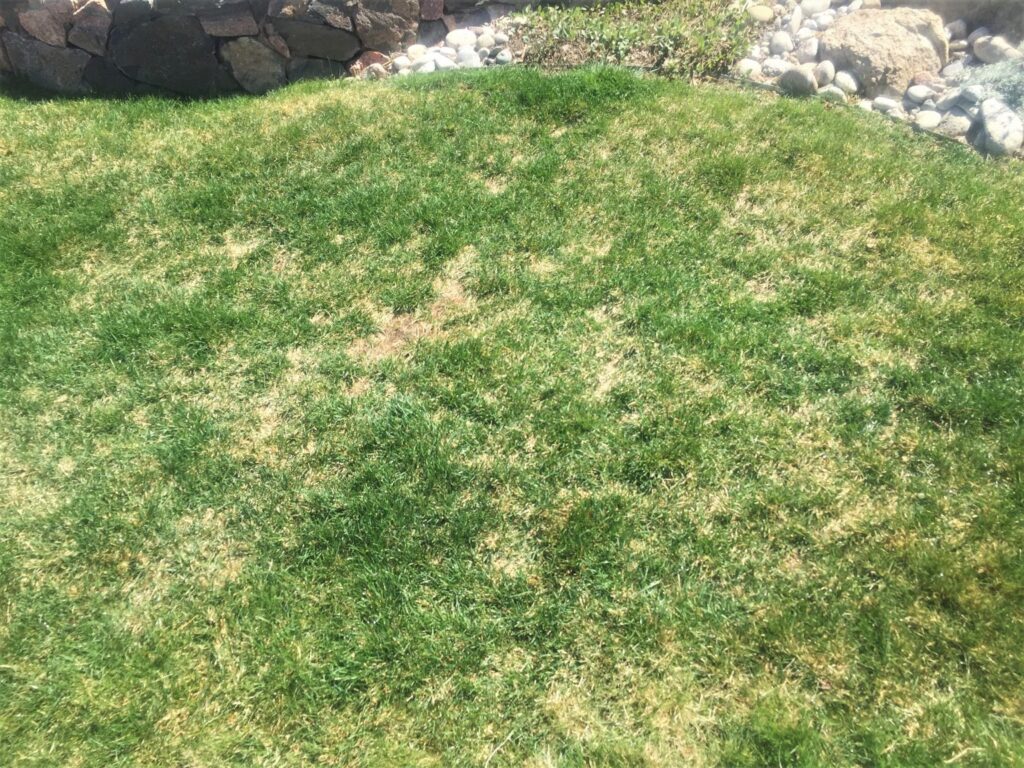
Additional FAQs - Snow Mold Treatment for Lawns
Snow mold is a fungal disease that occurs in lawns under snow cover or wet, cool conditions. There are two main types:
- Gray Snow Mold (Typhula blight): Caused by Typhula fungi, it thrives under prolonged snow cover.
- Pink Snow Mold (Microdochium patch): Caused by Microdochium nivale, it can occur with or without snow and is often more severe
Symptoms typically appear after snow melts in early spring and include:
- Circular patches of matted, discolored grass ranging from a few inches to a foot or more in diameter.
- Gray Snow Mold: Patches are grayish-white, and fungal mycelium may be visible.
- Pink Snow Mold: Patches are pink to salmon-colored with visible mycelium.
- Grass may appear dead or weak but often recovers unless damage is severe.
Snow mold thrives under the following conditions:
- Prolonged snow cover or layers of leaves/debris on grass.
- Cool, wet weather during late fall, winter, or early spring.
- Poor drainage or excessive thatch.
- Uncut or overly lush grass before winter dormancy.
To prevent Snow Mold, follow these tips:
- Fall Lawn Care:
- Mow the lawn until growth stops and mow the lawn at 2.25-2.5 inches for the final mow of the year to prevent matting of tall grass under snow.
- Remove leaves and debris from the lawn before snowfall.
- Aeration:
- Aerate compacted soil to improve drainage and reduce fungal-friendly conditions.
- Snow Management:
- Avoid piling snow in one area of the lawn, as it creates prolonged coverage.
- It Might be Unavoidable
- If significant snowfall occurs during winter and conditions are ideal, the development of snow mold may be unavoidable.
Treatment involves a combination of physical and cultural methods:
- Raking:
- Lightly rake affected areas in early spring to break up matted grass and improve air circulation.
- Overseeding:
- Seeding damaged areas to promote lawn recovery if the grass does not bounce back naturally.
- Wait and Observe:
- Grass often recovers naturally with warm, dry weather and proper lawn care.
Snow Mold rarely kills the lawn permanently. While it may cause significant damage to grass blades, the crowns and roots are usually unaffected. In severe cases the lawn may be damaged permanently and seeding may be necessary to recover the lawn.
We do not recommend using fungicides to prevent snow mold damage to lawns. Fungicides are usually ineffective because they must be applied preventively in late fall, just before the first heavy snowfall. In areas with persistent snow or wet conditions, repeat applications may be necessary, but this is challenging when the grass is covered by snow.
Recovery time depends on the severity of the infection and environmental conditions. In most cases, lawns recover within a few weeks of warm, dry weather in spring. Additional care, such as light raking and overseeding, can speed up the recovery process.
